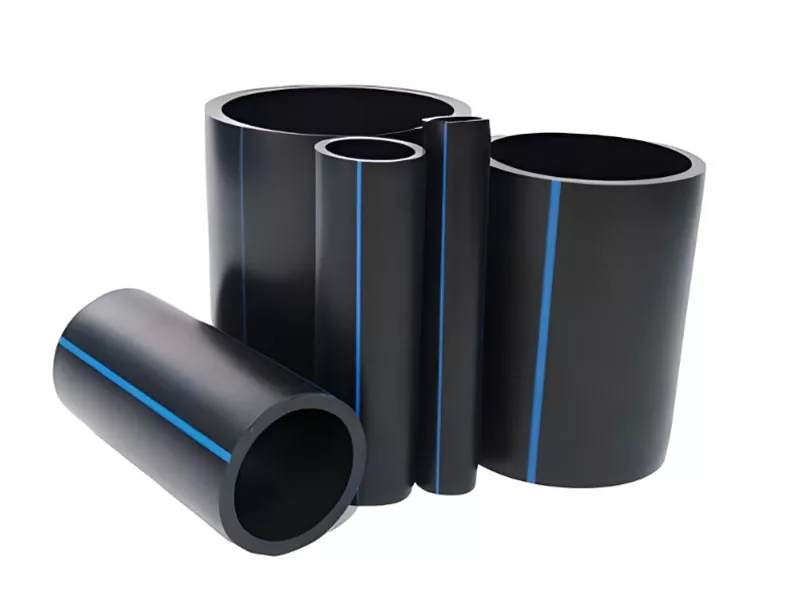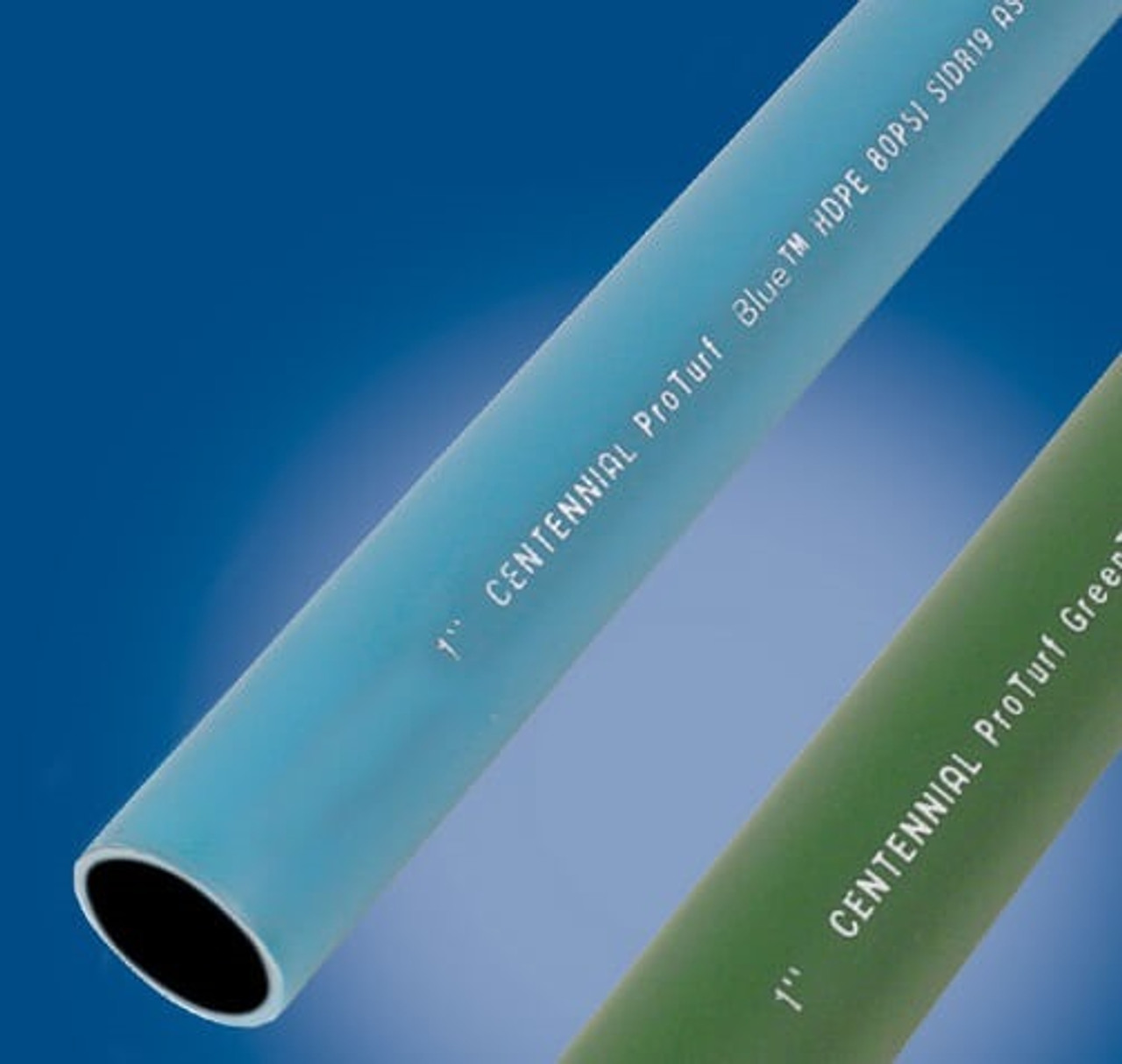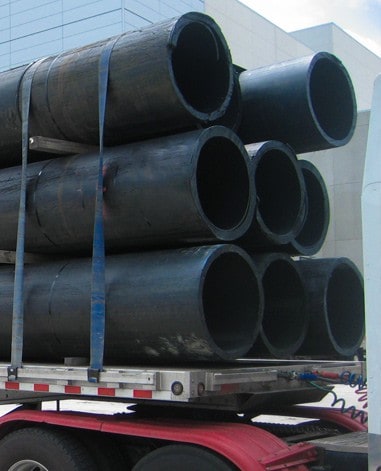Discover the Production Process Behind High-Quality HDPE Pipe and Its Applications
The production procedure of premium HDPE pipelines is intricate and systematic. It starts with the selection of raw products that boost efficiency. Following this, ethylene undergoes polymerization to develop resin, which is after that shaped through extrusion. Quality control is critical, making sure that the final product fulfills rigid criteria. Nevertheless, the journey of HDPE pipelines does not end with production. Their applications throughout numerous sectors disclose a wider value worth checking out.
Comprehending HDPE: Qualities and Advantages

High-density polyethylene (HDPE) is a flexible thermoplastic recognized for its toughness and resistance to different ecological aspects. This material shows outstanding tensile strength, making it ideal for demanding applications. Its low-density framework adds to a light-weight product, promoting simplicity of handling and setup. HDPE additionally showcases exceptional resistance to chemicals, which reduces destruction when exposed to rough materials.
The material's reduced dampness absorption better boosts its long life, making it optimal for use in pipelines and storage tanks. Furthermore, HDPE is immune to ultraviolet (UV) radiation, ensuring that products preserve their honesty also when exposed to sunshine. In addition, its adaptability permits the creation of intricate forms without compromising toughness. The environmentally friendly nature of HDPE, often originated from recycled products, includes in its charm, promoting lasting techniques in manufacturing. In general, these residential or commercial properties and advantages make HDPE a favored option for numerous commercial and customer applications.
Basic Material Choice for HDPE Manufacturing
The selection of resources for HDPE manufacturing is necessary to validate the last item meets the desired specs and top quality standards. High-density polyethylene (HDPE) is mainly created from polymerized ethylene, originated from nonrenewable fuel sources such as natural gas or crude oil. The high quality of these feedstocks substantially influences the mechanical and thermal residential or commercial properties of the final HDPE.
Additives also play a considerable duty in enhancing HDPE's performance, including anti-oxidants, UV stabilizers, and colorants, which enhance toughness and resistance to environmental variables. The option procedure must think about not just the chemical make-up of the raw materials yet additionally their handling attributes to ensure efficient manufacturing.
Furthermore, the sourcing of resources must focus on sustainability and conformity with ecological laws, as liable practices are imperative in today's market. Eventually, careful raw product selection lays the foundation for producing high-quality HDPE pipelines appropriate for varied applications.
The Extrusion Process: Shaping HDPE Pipe
The extrusion process plays an essential duty in forming HDPE pipes, starting with thorough product prep work strategies that assure perfect flow and uniformity. Just as vital is the layout of the die, which directly influences the final dimensions and surface area top quality of the pipe. With each other, these variables add greatly to the performance and high quality of HDPE pipeline manufacturing.
Material Preparation Techniques
Effective production of HDPE pipes starts with precise material preparation techniques, specifically the extrusion process. During this stage, high-density polyethylene resin is first dried out to eliminate dampness, guaranteeing optimal flow qualities. The resin is after that fed right into the extruder, where it goes through home heating and melting, transforming right into a thick state. This home heating procedure is very carefully regulated to keep the product's stability and performance. The molten HDPE is forced through a die, shaping it into a constant pipeline kind. Proper temperature management throughout extrusion is vital, as it straight impacts the material's buildings and the last product high quality. Once shaped, the HDPE pipeline is cooled down and reduced to specified lengths, all set for succeeding handling and applications.
Die Layout Importance
Precision in die style plays a crucial function in the extrusion procedure of HDPE pipelines. The die works as the last shaping tool, directly affecting the pipeline's measurements, wall surface density, and surface area finish. A well-designed die assurances uniform product circulation, lowering defects such as abnormalities and weak points. The geometry of the die should be enhanced to fit the details homes of HDPE, including its viscosity and thermal behavior throughout extrusion. Additionally, the cooling price of the product as it travels through the die can noticeably impact the pipeline's structural stability. Investing in advanced die modern technology is important for suppliers aiming to produce top notch HDPE pipelines that meet market requirements and consumer assumptions.
Quality Control Steps in HDPE Production
Although various elements affect the quality of HDPE pipeline production, effective high quality control steps are essential to assure consistency and dependability in the last product. Trick high quality control methods consist of rigorous material evaluation, confirming that the raw polyethylene meets well established criteria for pureness and density. During the extrusion procedure, specifications such as temperature, pressure, and cooling time are very closely monitored to keep dimensional precision and architectural stability
Additionally, post-production screening is necessary; manufacturers often carry out hydrostatic examinations to assess the pipe's toughness and resistance to pressure. Visual examinations for surface area issues additionally improve quality guarantee. Certification from pertinent requirements companies, like ASTM or ISO, supplies an additional layer of reliability. By executing these comprehensive high quality control measures, manufacturers can lessen issues, enhance performance, and ensure that the HDPE pipelines meet the certain requirements of various applications, ultimately resulting in client contentment and count on in the product.
Applications of HDPE Pipe Across Industries
HDPE pipelines are made use of throughout various fields as a result of their resilience and flexibility. In water distribution systems, they guarantee efficient delivery, while in wastewater management, they give reputable remedies for waste transport. Furthermore, farming watering networks benefit from HDPE's resistance to rust and flexibility, making it an ideal choice for modern farming practices.

Water Distribution Solutions
A significant number of sectors depend on high-density polyethylene (HDPE) pipes for reliable water distribution systems. Understood for their resilience and resistance to deterioration, HDPE pipes are extensively utilized in local supply of water networks, farming irrigation, and commercial applications. Their light-weight nature assists in very easy handling and installation, reducing labor costs and time. Furthermore, HDPE pipelines can fit numerous stress degrees, making them suitable for both low and high-pressure systems. American Plastics HDPE Pipe Manufacturing. The adaptability of the product enables for seamless combination into existing infrastructure, reducing the requirement for considerable excavation. Furthermore, HDPE's resistance to chemical leaching assurances that the water supplied continues to be secure and tidy, making it a perfect choice for maintaining the high quality of potable water across different fields
Wastewater Monitoring Solutions
Efficient water distribution systems likewise lead the way for ingenious wastewater management solutions, where high-density polyethylene (HDPE) pipelines play a considerable duty. Renowned for their toughness and resistance to deterioration, HDPE pipes are excellent for transporting wastewater in different settings. Their versatility enables very easy installment in intricate environments, lessening the demand for substantial excavation. Additionally, HDPE's smooth interior surface area reduces friction, enhancing flow prices and performance. These pipelines are additionally immune to chemical leaching, making certain that contaminants do not compromise the surrounding environment. Industries, communities, and therapy facilities progressively count on HDPE pipelines for their reliability and longevity, making them a preferred choice for contemporary wastewater management systems. This versatility underscores the vital relevance of HDPE pipes throughout numerous applications.
Agricultural Watering Networks
Agricultural irrigation networks profit greatly from making use of high-density polyethylene (HDPE) pipes, which supply effective and reliable water delivery to plants. HDPE pipelines are lightweight, making them simple to transfer and mount, while their adaptability enables numerous arrangements in varied surfaces. These pipelines show superb resistance to deterioration, chemicals, and UV radiation, guaranteeing resilience in severe agricultural settings. Furthermore, their smooth indoor surface area lessens rubbing loss, optimizing water circulation and reducing power costs related to pumping. The longevity of HDPE pipes, typically exceeding half a century, adds to lower upkeep and replacement costs. Farmers progressively count on HDPE pipelines to enhance irrigation efficiency and advertise lasting agricultural methods, inevitably leading to improved plant returns and resource preservation.

Future Patterns in HDPE Pipe Innovation
As the demand for lasting and effective framework expands, innovations in HDPE pipe technology are positioned to transform different sectors. Emerging patterns consist of the integration of clever innovations, such as sensing units and IoT capacities, which help with real-time tracking of pipeline conditions, decreasing upkeep prices and stopping leakages. In addition, the advancement of advanced production methods, such as 3D printing, is enabling the production of complicated, personalized pipeline layouts that satisfy particular job demands.
Moreover, the focus on recycling and round economy methods is driving the technology of HDPE pipes made from recycled materials, enhancing sustainability. Improved jointing techniques, such as electro-fusion and mechanical fittings, are also improving installation performance and integrity. The growing emphasis on environmental guidelines is pushing producers to embrace greener production procedures, guaranteeing that HDPE pipes not just meet sector requirements but also cultivate a more lasting future for framework advancement.
Frequently Asked Inquiries
Exactly How Does HDPE Contrast to Various Other Plastic Materials?
HDPE outshines lots of other plastic materials regarding resilience, chemical resistance, and flexibility. Its low density and high tensile stamina make it suitable for various applications, usually going beyond alternatives in both performance and longevity.
What Are the Environmental Effects of HDPE Manufacturing?
The environmental impacts of HDPE manufacturing consist of greenhouse gas emissions, power consumption, and possible pollution from making processes. In addition, improper disposal can cause dirt and water contamination, increasing worries about long-lasting ecological effects.
Can HDPE Pipes Be Reused?
Yes, HDPE pipes can be reused. Lots of facilities approve utilized HDPE for processing, changing it right into brand-new products. This reusing adds to sustainability initiatives, reducing plastic waste while saving resources and energy in the production cycle.
What Is the Life-span of HDPE Pipes?

How Do Temperature Variations Impact HDPE Pipe Performance?
Temperature variations considerably influence HDPE pipeline efficiency, influencing flexibility and strength. Heats can result in softening, while low temperatures may cause brittleness, ultimately influencing the pipe's longevity and viability for various applications in diverse atmospheres.